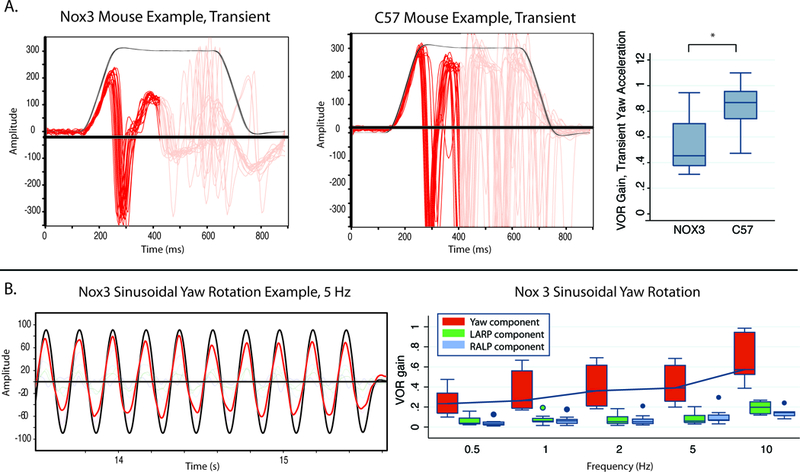Figure 3.

VOR response in head tilt (Nox3) mice A) Example of eye movement traces in response to transient, rightward,horizontal whole-body rotation in a head-tilt mouse and an exceptionally good example of a C57 mouse, with acceleration 3000 deg/s2 for 100 msec to a 300 deg/s constant-velocity plateau. Black trace represents the horizontal head velocity stimulus and the red trace the horizontal component of the eye velocity response, which comprises an initial, VOR-driven slow phase nystagmus during the constant-acceleration portion of the stimulus and then an alternating series of rightward nystagmus quick phases (toward negative values in this plot) and slow phases (positive value segments). Right panel shows head tilt mice have a robust and well aligned 3D angular VOR in response to quick, passive horizontal head rotations, with the horizontal component gain ranging from 0.3–0.7, nevertheless this is lower than C57 litter mates, p<0.05. C) Responses to horizontal 100 deg/s peak sinusoidal rotations demonstrate median gain increasing from 0.3 to 0.7 across frequencies from 0.5 Hz to 10 Hz, with other components of the 3D VOR small. VOR, vestibulo-ocular reflex; LARP, left anterior-right posterior plane; RALP, right anterior-left posterior canal plane
